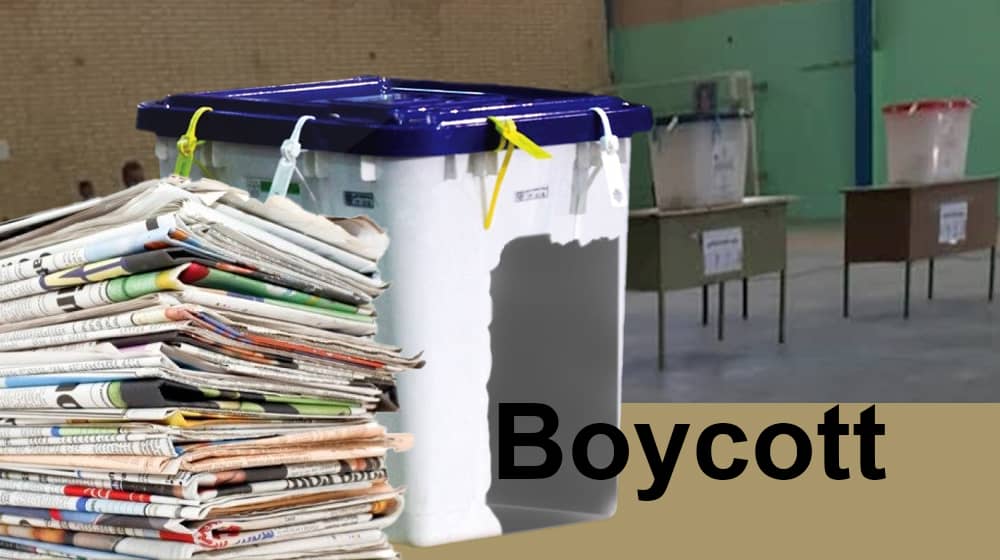

Amidst the failing health of Supreme Leader Ali Khamenei, there’s an escalating belief that he is orchestrating these elections to cement his preferred successor’s path to power. This strategic maneuver involves a significant purge of those seen as potential threats to his plan, underlining the elections’ superficial nature.
The underlying tension within the regime was palpable on January 9, during Khamenei’s meeting with loyalists in Qom. Here, Khamenei indirectly chastised those abstaining from voting as contributors to the nation’s economic struggles, framing it as alignment with anti-regime forces. “The enemy’s strategic policy is to sideline people. Refusing to turn out in elections aligns with this enemy strategy,” Khamenei declared, emphasizing the perceived importance of voter participation in legitimizing the government.
This sentiment was further echoed in Khamenei’s January 3 speech, where he labeled opposition to the elections as a direct affront to the Islamic Republic and Islam itself, marking it as a hostile act. Earlier, on December 23, 2023, he lambasted those discouraging electoral participation, claiming that their actions would lead Iran towards dictatorship.
Watch and judge why this disgruntled insider is exposing how #Khamenei has sidelined all rival factions inside #Iran's regime. pic.twitter.com/wVRW2HQKzQ
— NCRI-FAC (@iran_policy) January 4, 2024
The regime’s control extends beyond rhetoric, with systematic coercion of individuals linked to the Islamic Revolutionary Guard Corps (IRGC), the army, the police, and all government agencies to vote. This extends to their families, with voting evidence marked on identity cards, a requirement for employment and administrative dealings. Khamenei’s influence also reverberates through religious circles, with representatives in different cities urged to encourage, and subtly coerce, those dependent on government budgets to participate in the elections.
However, the regime’s credibility crisis is deepening with each passing election. Despite the “Consolidation of Votes Room” manipulating statistics and the IRGC’s exposed vote-rigging activities, the people’s dissent is growing. This was evident in the June 2021 presidential elections, where Ebrahim Raisi’s victory came amidst the lowest voter turnout in the regime’s history and an unprecedented number of blank votes.
The regime’s claim of legitimacy through electoral participation stands in stark contrast to the growing rejection by the Iranian populace.
Watch and judge how #Khamenei now resorts to direct threatening those who boycott the regime's sham #iranelection pic.twitter.com/9G6p7RF7H3
— NCRI-FAC (@iran_policy) January 4, 2024
This is highlighted by the mass exodus of Iranians, with over 8 million, including the country’s elites, leaving to escape repression. Furthermore, the regime’s harsh penal system is reflected in the staggering number of incarcerations and extreme sentences, including executions and amputations, as revealed by the Iranian Resistance.
Domestic dissatisfaction is not limited to political opposition. Economic grievances fuel daily protests, with over 3,600 recorded in 2023 alone. The academic sphere is also under duress, with thousands of students and professors expelled for political reasons, particularly those associated with the 2022 protests.
Women, constituting 60% of the student population, face systemic discrimination under misogynistic laws. This has galvanized them into becoming one of the largest dissenting groups, as evidenced in their 2022 uprising.
Watch and judge why #Khamenei’s representative in Mashhad can't help but begging the regime’s insiders to vote in the upcoming sham #elections pic.twitter.com/CbGSsqgQrI
— NCRI-FAC (@iran_policy) December 31, 2023
The regime’s apparent stability has been significantly challenged since 2017, with uprisings echoing the demand for radical change. Khamenei’s efforts to divert attention through proxy wars in the Middle East and internal purges have failed to address the growing domestic dissent. This leaves the regime at a crossroads, facing internal vulnerabilities and an increasingly defiant population, demanding more than just superficial electoral processes.

MEK Iran (follow us on Twitter and Facebook), Maryam Rajavi’s on her site, Twitter & Facebook, NCRI (Twitter & Facebook), and People’s Mojahedin Organization of Iran – MEK IRAN – YouTu







